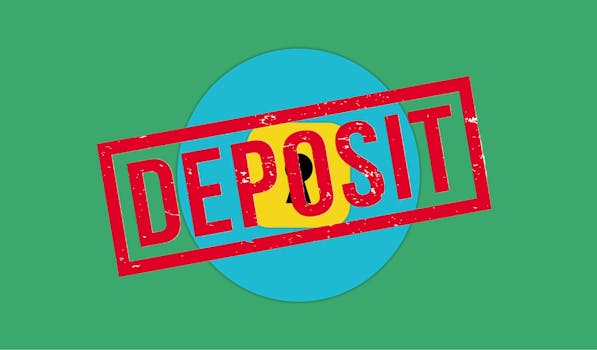Small Business Financing
What Is Equipment Financing and When to Use It
Discover equipment financing benefits, compare leasing vs. loans, and learn when to use each for your business goals. Stay competitive and keep your cash flow strong with smart strategies.
Advertisement

Every business owner hits a crossroad: invest in new technology or stretch old equipment further? At this point, equipment financing can quietly reshape what’s possible.
Capital is precious and needs focused direction. Equipment financing gives businesses the tools to stay current, providing flexibility without draining existing resources or stalling daily operations.
Throughout this article, you’ll learn the details of equipment financing and discover specific scenarios where it serves as a practical solution to common business challenges.
Identifying the True Value of Equipment Financing
Understanding equipment financing helps business owners make timely upgrades and keep operations running smoothly. Recognizing the value of these options can provide practical, immediate benefits.
Using equipment financing is like upgrading to a better smartphone: when done right, the investment pays for itself with improved performance. Let’s break down the core principles and context.
The Real-World Purpose of Equipment Financing
Business owners use equipment financing to acquire vital tools without upfront payment shocks. This minimizes risk and keeps cash available for other operating expenses. It’s about having the gear you need, exactly when you need it.
For example, a bakery replaces an aging oven before it breaks unexpectedly. Equipment financing ensures seamless production, protecting revenue and freeing working capital for payroll or marketing campaigns.
Instead of waiting for savings, borrowers can act immediately. This creates new opportunities for expansion or adaptation to competitive markets.
Comparing Financing to Outright Purchases
Paying cash for equipment ties up money that could fuel growth elsewhere. Financing preserves liquidity and distributes costs over time, lightening the initial financial load.
Equipment financing also unlocks equipment access earlier, since businesses aren’t forced to wait until the full purchase amount is available. This means you can react quickly to shifting demands.
Choosing the right path hinges on lifecycle costs, tax benefits, and flexibility—factors you’ll see in the following table comparison.
| Financing Option | Upfront Cost | Impact on Cash Flow | Best Fit For |
|---|---|---|---|
| Outright Purchase | High | Immediate reduction | Strong cash reserves, stable needs |
| Equipment Loan | Low to moderate | Predictable payments | Growth, evolving needs |
| Leasing | Minimal | Regular, smaller payments | Short-term use, tech upgrades |
| Line of Credit | Varies | Flexible, as needed | Multiple purchases, emergencies |
| Vendor Financing | Negotiable | May offer incentives | Loyal relationships, custom terms |
Weighing Which Equipment Demands Financing
Assessing equipment type reveals when financing makes business sense. Not every tool justifies the same approach, especially for technology and high-ticket items.
Look for objects that dramatically impact productivity or directly influence customer experience. For these items, equipment financing serves as an accelerator rather than a crutch.
Timing Purchases for Maximum Advantage
Securing financing just before seasonal upticks allows businesses to meet demand confidently. For instance, a landscaping company may finance extra mowers in spring, ensuring the fleet handles new contracts smoothly.
- Estimate peak seasons annually to align financing with busy periods; this helps avoid equipment shortages and maximizes return on investment when it matters most.
- Plan for upcoming technology changes that could render older equipment less effective; advanced planning lets you switch at the best moment for minimal disruption.
- Set reminders for equipment nearing end-of-life to explore financing options early and prevent emergencies or rushed decisions that may limit options.
- Calculate current equipment downtime costs; financing timely replacements reduces unplanned repairs and lost productivity, preserving reputation and profits.
- Base decisions not only on need, but also market trends; tracking what competitors are upgrading ensures you don’t fall behind in essential capabilities.
Being proactive about financing is like setting your GPS early. You get there faster, with fewer bumps on the road, and avoid costly surprises along the way.
Matching Lifespan to Payment Terms
Always match the equipment’s expected lifespan to the financing term. Paying off a three-year loan for equipment that lasts one year leaves unwanted debt behind.
- Research average useful life for your equipment class—industry standards provide a reality check against wishful thinking when structuring payments.
- Work with lenders who tailor repayment schedules for seasonal or cyclical cash flow; flexibility breeds sustainability and helps avoid disruptions.
- Negotiate terms that allow for prepayment or upgrades, especially for fast-evolving technology sectors, enabling strategic pivots without penalty fees.
- Monitor equipment wear and maintenance logs; if downtime rises, reevaluate remaining payments and refinancing options to stay agile mid-term.
- Regularly reassess insurance coverage against loan obligations; staying protected from unexpected events solidifies your investment, reducing risk.
Good alignment between financing terms and equipment lifespan means you mostly finish paying about when the equipment has finished serving you well.
Exploring the Main Types of Equipment Financing
Knowing which option fits your business best creates tailored solutions. Equipment loans, leases, and lines of credit offer unique advantages based on your situation.
Each tool suits a different kind of business challenge. Exploring them in detail helps you make a selection with confidence, not guesswork.
Choosing Traditional Equipment Loans Effectively
Traditional equipment loans let you own the asset outright after repayment. You secure the loan with the equipment itself, making approval easier if you lack extensive credit history.
This approach suits purchases with long useful lives, like vehicles or industrial machines. Fixed payments enable businesses to budget confidently, protecting against interest-rate spikes during the loan’s duration.
Well-structured loans offer potential tax benefits through depreciation. Be sure to compare rates and terms, while reviewing lender requirements for down payments or collateral.
Leasing vs. Loans: Making the Right Call
Leasing is just renting for a certain period while a loan leads to ownership. Companies that value staying up-to-date with tech upgrades find leasing a nimble solution.
Lease agreements tend to have lower monthly payments. However, you may have restrictions on use or customization depending on lease clauses.
Loans are better when customization, long-term ownership, or full control over maintenance matters most. Both options can be used for all sorts of enterprise gear, depending on business goals.
Securing Approval: Steps Borrowers Can Take Now
Following a straightforward process improves chances of equipment financing approval. Preparation ensures smoother interactions with lenders and speeds up the timeline to accessing new equipment.
The right documents and groundwork make every stage more predictable, removing stress from the financing journey.
Prepping Paperwork: Documents That Matter
Gather your past years’ financial statements first. Lenders focus on documents like balance sheets and income statements to assess cash flow and repayment capability.
Compile tax returns, personal and business, so lenders can verify earnings consistency and legal compliance. Having these ready saves days during the approval process.
Inventory existing equipment and note market values; lenders sometimes offer better terms when they see an organized operation. Bring this list along to your first meeting or phone call with a financing specialist.
Improving Approval Odds Ahead of Time
Work on your credit score before applying. Pay down revolving debts and address small errors on reports—these efforts pay clear, fast dividends in loan offers.
Show documented revenue growth, even if modest. Steady performance over several quarters instills lender confidence, translating into more competitive interest rates and flexible terms.
Prepare a business plan outlining how the equipment improves output or efficiency. This narrative helps lenders visualize return on investment and supports stronger requests for funding.
Calculating Costs: Breaking Down Payments, Fees, and Savings
Making informed decisions around equipment financing helps reduce risk and manage cash flow accurately. Carefully tracking expenses refines overall financial strategy.
Understanding every part of the cost—from interest to insurance—means you’re never blindsided by hidden fees or unexpected increases in monthly obligations.
Evaluating Total Loan Cost Over Time
Sum the total payments over the contract, not just monthly rates. Add interest, origination fees, documentation costs, and insurance. Make sure to factor in service charges for early payment or upgrades.
Compare effective annual percentage rates (APR) across different offers. An offer with a lower monthly payment might result in higher long-term costs if spread over a longer duration with more hidden fees.
Check whether equipment qualifies for bonus depreciation or deductibility; these savings can offset a portion of costs if you structure your financing deal properly.
Evaluating the Impact of Seasonal and Variable Payments
Some lenders offer seasonal or step-up payment schedules that align with your business cycle. For example, farming equipment may have lower payments in winter, higher when harvest income arrives.
Look for options with payment holidays or deferral clauses; these act as built-in shock absorbers during lean months or periods of temporary disruption like slow seasons or renovations.
Bind payment structures tightly to projected cash inflows, preventing surprises. Rather than guessing, use actual bank data and sales forecasts to advocate for a structure that supports real-world fluctuations.
Maximizing ROI: Keeping Equipment Relevant
Keeping equipment modern and relevant increases your overall return on investment (ROI). Proactive upgrades, calibration, and technology swaps mean financing isn’t wasted on obsolete gear.
Planning for regular updates makes equipment financing a renewable resource, not just a one-off transaction.
Refreshing Equipment at Strategic Intervals
Mark your calendar for periodic reviews of all financed equipment. Schedule these check-ins before warranty expiration or major service milestones for optimal leverage during renegotiations or upgrades.
Work with suppliers offering trade-in or upgrade paths. For example, computer leasing programs may provide discounted models when you return used equipment on schedule.
Test new features onsite as soon as upgrades become available. Report findings to decision-makers and incorporate feedback into future financing negotiations with lenders and vendors.
Managing Repairs, Maintenance, and Insurance
Always include a maintenance plan within your financing deal. Well-maintained equipment lasts longer, improves safety, and reduces chronic downtime, boosting your yearly return.
Review and update insurance as equipment values shift. Report thefts or damages quickly and document everything for smooth filing and reimbursement processes.
If possible, negotiate service or warranty extensions into your financing agreement for peace of mind and predictable budgeting through the entire equipment lifecycle.
Deciding When Equipment Financing Is the Smartest Move
Understanding timing, goals, and market conditions ensures you use equipment financing only when it delivers a clear win for your business.
Applying a checklist of must-have conditions and benefits lets you evaluate financing almost automatically—removing hesitation from the process.
Checklist for Making the Right Call
Use a checklist to assess readiness for equipment financing. Does the purchase increase productivity, cut downtime, or open new revenue streams? These triggers suggest financing is smart.
Double-check your cash flow forecasts. Confirm that new payments fit comfortably into current and expected budgets for the entire finance term.
Talk to peers in your industry to confirm benchmarks. If competitors embrace new machinery at scale, waiting too long may cost you contracts or market share in the near term.
Taking Action After Your Decision
When you’re ready, research providers that cater to your business size and sector—some lenders know more about your industry than others. This extra knowledge speeds up approvals and can surface better rates.
Schedule a demo or test drive with the vendor in person. Confirm product claims and fit before signing any paperwork. A short delay at this stage prevents years of regret or tech mismatches.
Once you execute your financing deal, update your bookkeeping to track payment dates, insurance coverage, and maintenance plans. This ensures everything stays visible and under control from day one.
Final Thoughts and Practical Takeaways
Smart equipment financing keeps businesses modern, agile, and competitive. By matching funding to needs and timelines, you reduce financial stress and unlock new opportunities.
Choosing the right financing structure means every dollar spent carries your business closer to its goals, rather than just replacing what’s broken or worn down.
With careful preparation and active management, equipment financing becomes a tool for growth and security—helping your business build a solid foundation for success in a changing world.
You may also like

American Express Explorer Credit Card review: Maximise Your Rewards
Maximize your travel experiences with the Amex Explorer Card. Enjoy a $400 travel credit annually, lounge access, and a rewards program.
Keep Reading

